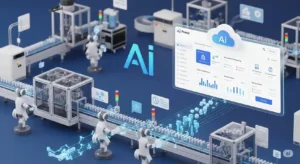Introduction
In today’s rapidly evolving business landscape, organizations often face the need to upgrade their operational systems to stay competitive and streamline their processes. Enterprise Resource Planning (ERP) systems have emerged as a powerful solution to help businesses integrate various functions and manage their resources efficiently. However, implementing an ERP system requires careful planning and execution to ensure a smooth transition and maximize the benefits it offers. This article aims to provide an in-depth understanding of the key phases involved in an ERP implementation plan.
Phase 1: Project Initiation
The initial phase of an ERP implementation plan is crucial as it sets the foundation for the entire project. In this phase, it is essential to define the project’s objectives, identify stakeholders, and establish a dedicated project team. Conducting a thorough needs assessment and defining the scope of the implementation are vital to align the ERP system with the organization’s requirements. It is also important to allocate resources, define a realistic timeline, and establish key performance indicators (KPIs) to measure the project’s success.
Phase 2: Requirements Gathering and Analysis
Once the project initiation phase is complete, the focus shifts to gathering and analyzing the organization’s requirements. This phase involves engaging with different departments and stakeholders to understand their needs and challenges. Through workshops, interviews, and data analysis, the project team can identify the specific functionalities, processes, and workflows that the ERP system needs to support. It is crucial to document these requirements in detail to ensure accuracy and avoid any ambiguity during the subsequent phases.
Phase 3: System Design and Configuration
With a clear understanding of the requirements, the next phase involves designing and configuring the ERP system to meet those needs. The project team collaborates with ERP consultants or internal IT experts to map the business processes, define data structures, and determine system workflows. Customizations and configurations are implemented to align the ERP system with the organization’s unique requirements. Testing the system design thoroughly is crucial to identify and resolve any issues before proceeding further.
Phase 4: Data Migration and Integration
Data migration is a critical aspect of an ERP implementation. During this phase, existing data from legacy systems or spreadsheets is transferred to the new ERP system. Data cleansing and validation processes are undertaken to ensure the accuracy and integrity of the migrated data. Integration with other systems, such as customer relationship management (CRM) or supply chain management (SCM), may also be required to enable seamless data exchange and process automation.
Phase 5: Training and Change Management
As the ERP system nears its launch, adequate training and change management initiatives become paramount. Employees need to be trained on how to use the new system effectively. Training programs, workshops, and user documentation are developed to educate users about the system’s features and functionalities. Change management strategies are implemented to address any resistance to change and ensure smooth adoption across the organization. Engaging with employees and addressing their concerns is crucial for successful change management.
Phase 6: System Testing and User Acceptance
Before the ERP system goes live, rigorous testing is performed to ensure its stability and functionality. The project team conducts various tests, including unit testing, integration testing, and system acceptance testing. Bugs, glitches, or performance issues are identified, documented, and resolved promptly. User acceptance testing involves involving key stakeholders and end-users to validate the system’s readiness for production use. Feedback and suggestions from users are collected and addressed to enhance the system’s usability.
Phase 7: Go-Live and Post-Implementation Support
The final phase marks the go-live of the ERP system, where it becomes operational for daily business processes. A carefully planned cutover strategy ensures a smooth transition from the old systems to the new ERP system. Post-implementation support is crucial during this phase to address any teething issues, provide additional training if required, and monitor system performance. Continuous monitoring and evaluation allow for ongoing system optimization and improvement based on user feedback and evolving business needs.
Conclusion
Implementing an ERP system is a complex undertaking that requires meticulous planning, execution, and continuous monitoring. By following the key phases outlined in this article – project initiation, requirements gathering and analysis, system design and configuration, data migration and integration, training and change management, system testing and user acceptance, and go-live with post-implementation support – organizations can ensure a successful ERP implementation. With careful consideration of each phase and thorough adherence to best practices, businesses can unlock the full potential of their ERP system and drive operational excellence.







